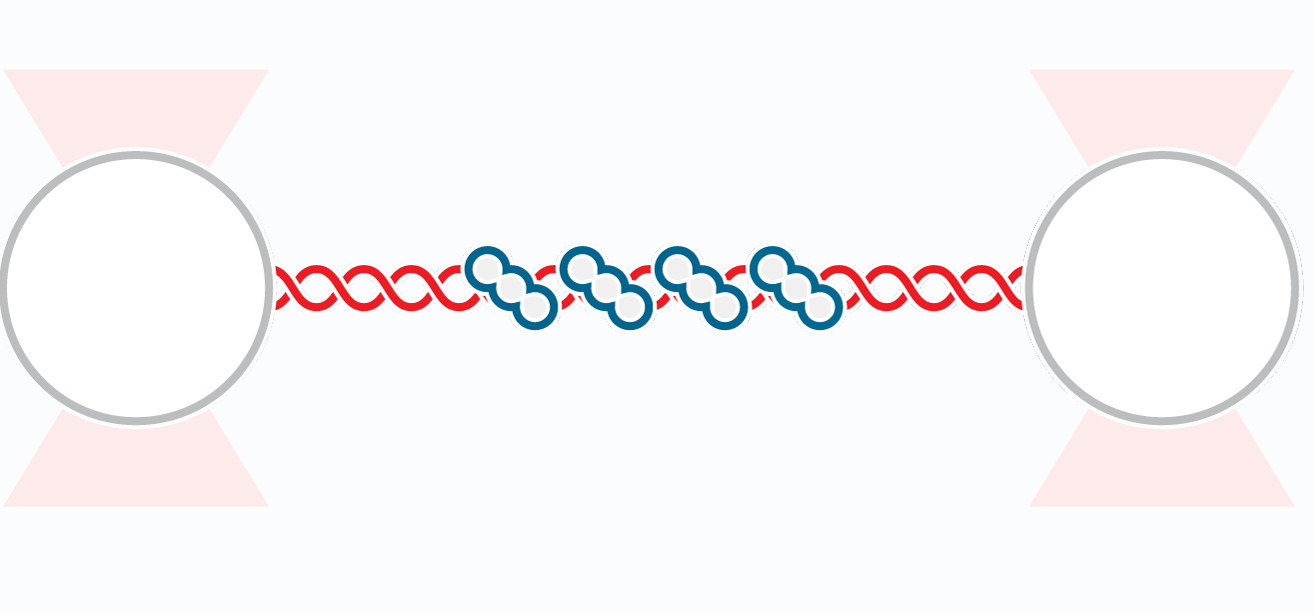The article “Human RAD52 Captures and Holds DNA Strands, Increases DNA flexibility, and Prevents Melting of Duplex DNA: Implications for DNA Recombination” was recently published in Cell Reports. Congratulations to Dr. Ineke Brouwer and all co-authors!
In this paper optical tweezers coupled with fluorescence microscopy and microfluidics were used to investigate the role of RAD52-DNA complex in DNA repair, by studying and comparing the interactions between human RAD52 and DNA. Brouwer et al. found that the protein homolog exhibits different affinity and binding patterns when it is subjected to double-stranded and single-stranded DNA (ssDNA). When ssDNA binds, the binding is static, while in the case of duplex DNA, RAD52 binds slower and weaker, changes the mechanics and alters the overstretching behaviour of the double DNA strands. These findings suggest that RAD52 stimulates strand exchange in vitro by intercalating in the double helix to make the bases more accessible for base pairing.
The technique used in this paper is made commercially available by LUMICKS. Read more about the C-Trap® Optical Tweezers-Fluorescence Microscopy here.


